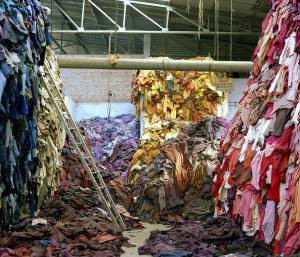
Although people are generally in favor of “green” products and practices, it’s not a simple yes or no issue. One concern regarding sustainability is that the word lacks a shared definition. To one manufacturer sustainability may mean creating a biodegradable product, while to another it’s providing a product that is recyclable. How much energy is used to produce it comes into play, as does what kinds of emissions result from the manufacturing process. Unfortunately, there are also some companies guilty of “greenwashing” (overstating a product’s or the company’s environmentally friendly practices). It’s not so surprising that sustainability can be a fuzzy concept.
It’s not just semantics
As an example, Steve Fredrickson, national sales manager, Serge Ferrari North America, points to the 2012 Summer Olympics in London, where materials were required to be recyclable. “Though materials were required to be recyclable, not all were,” he says. “Some were repurposed, which meant that they went downstream somewhere. Repurposed is not the same as recycled, and yet there are plenty of companies claiming that standard.”
Fredrickson expects to see legislation in Europe to deal with this sometime in the near future (Europe added ISO standard 14021 in 1999 to address self-declared environmental claims), but he is not so optimistic about the U.S. “There’s nothing in the works right now to standardize sustainability domestically because manufacturers don’t want it,” he says. “They all want to be able to claim to be green and until the specifier requires proof, it’s not going to change.”
Thanks to the U.S. Green Building Council’s LEED green building initiative, sourcing raw materials with recycled content will likely increase, Fredrickson says. “Because of the recycled content clauses in LEED, more people are looking for components to add to their products to meet those criteria.”
Aurora, Ill.-based textile-processing company, Aurora Specialty Textiles Group Inc., has experienced a drastic drop in demand for its Weaves of Green™ line of 100 percent recycled polyester printable textiles. “We rolled the product out about five years ago, and it was extremely successful for the first year or two,” says Aurora’s president Robert Matz. “Over the past few years, sales have plummeted. I think people just don’t want to spend the money for it.”
The cost of sustainability is a factor for wovens and nonwovens. “While sustainability is a topic of interest, many retailers and consumers expect sustainable products without having to pay more for them,” says Elisabeth Stanger, global director, business development, hygiene at The Lenzing Group, Lenzing, Austria, which supplies manmade cellulose fibers to the textile and nonwovens industry, including those used in disposable wipes.
“Looking at sustainability means looking at the raw material, the production process, the logistics and the disposal,” Stanger says. “Increasing awareness and pressure from the canalization [sewage waste system] caused the industry to be proactive and develop new flushability guidelines for MTT (moist toilet paper).” Edana and Inda, two international trade associations for the nonwovens and engineered fabrics industry, recently released new guidelines addressing both dispersion and biodegradability. Stanger points out that Lenzing’s TENCEL® fibers are wood-based, and certified biodegradable and home-compostable, and its short-cut fibers can be part of the sustainable solution for future products.
Consumer education is a critical factor for the success of sustainable products—for both wovens and nonwovens. For hygiene products, Stanger notes that consumers typically aren’t informed about the raw material in the products, and that legislation is lacking. “Many consumers wish to buy sustainable products,” Stanger says. “To do so, they need to be informed.”
 TEXTILES.ORG
TEXTILES.ORG


